Tours
Learn more about hours and admission. See our upcoming programs and events. Explore our gardens and grounds, including the Channing Blake Footpath, and the Cooks’ Garden.
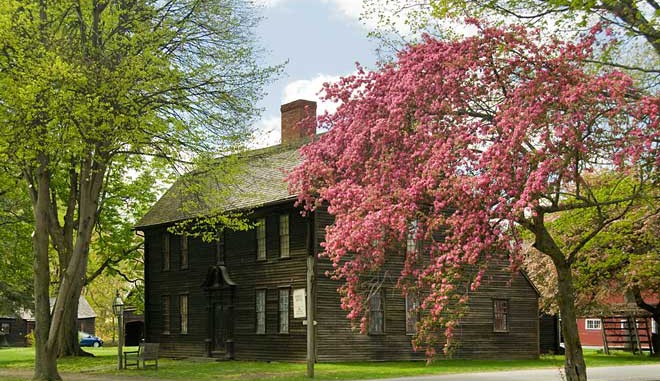
9:30 a.m. to 4:30 p.m. | Guided Tours on the hour.
Wednesday-Sunday and Holiday Mondays
Built in 1734, the Ashley House served as the home of Deerfield’s 18th-century minister with furnishings of the Connecticut River elite and English ceramics. It is an example of Deerfield’s first 18th-century building boom. In the 1730s, successful Deerfield farmers enlarged old dwellings and built new ones often with stylish doorways in a distinctive Connecticut Valley style. In the 1750s, the Reverend Jonathan Ashley made substantial alterations to his house, such as a grand doorway, a central hallway staircase, and fine paneling. Inside the house visitors see furnishings owned by the Connecticut Valley’s “River Gods,” the political-military-mercantile-ministerial elite that governed the towns of western Massachusetts until the American Revolution. The Ashley House was the first restoration opened to the public by the founders of Historic Deerfield, Henry and Helen Geier Flynt, in 1948.
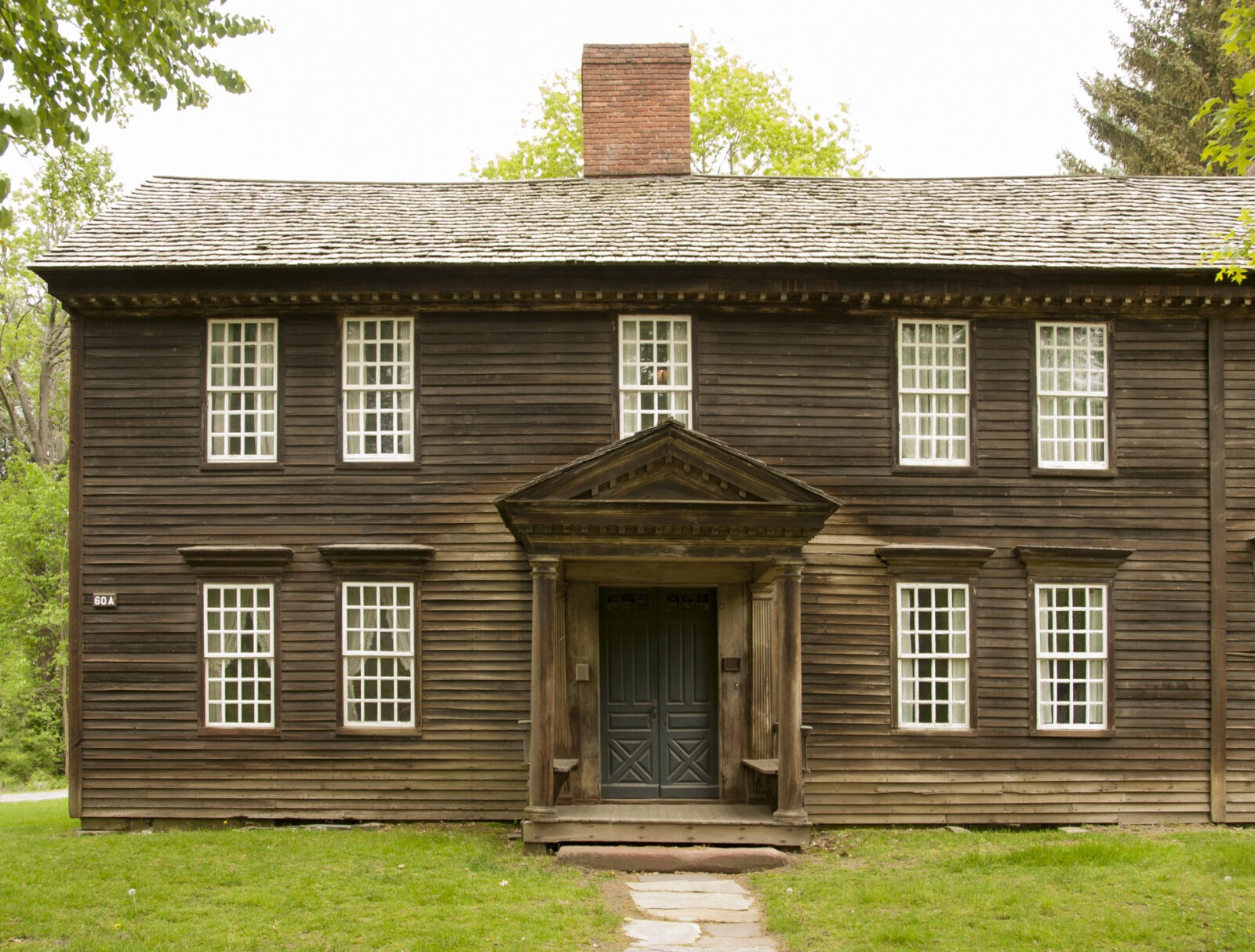
9:30 a.m. to 4:30 p.m. | Guided Tours on the hour.
Wednesday-Sunday and Holiday Mondays
Built circa 1750, the Frary House depicts the Colonial Revival home of Miss C. Alice Baker, as restored in the 1890s with New England antiques, Arts and Crafts needlework, ironware and basketry. Baker was a teacher, collector, and antiquarian researcher, who restored the Frary House in 1892. Today Miss Baker’s home interprets the village’s active Arts and Crafts movement, her antiquarian pursuits, and her role in fostering the Colonial Revival in Deerfield.
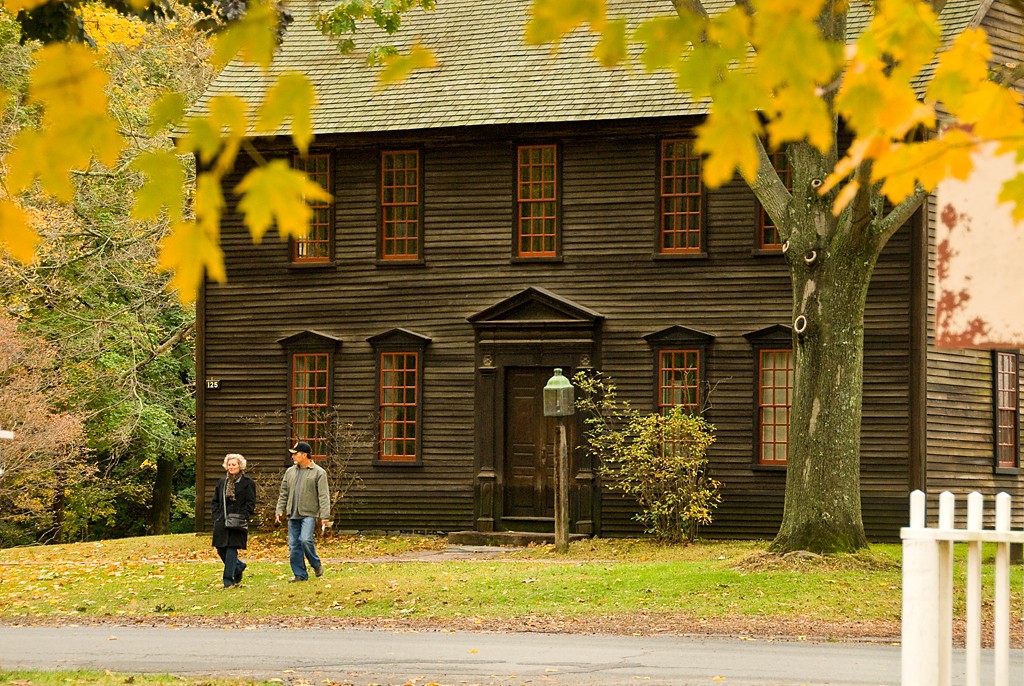
9:30 a.m. to 4:30 p.m. | Self-guided.
Wednesday-Sunday and Holiday Mondays
Built in 1754/7, the Sheldon House has an 1802 single-story ell or addition to the rear. The house is interpreted to the period of 1780 to 1810, when the house was occupied by three generations of Sheldon family members. The expansion of the house in 1802 was probably done with the expectation that several Sheldon children would marry and increase the household. The Sheldons were farmers whose livelihood included fattening cattle penned in stalls on provender (corn, peas, and oats) and hay. In the early spring drovers took the fattened cattle to Brighton (near Boston) for slaughter.
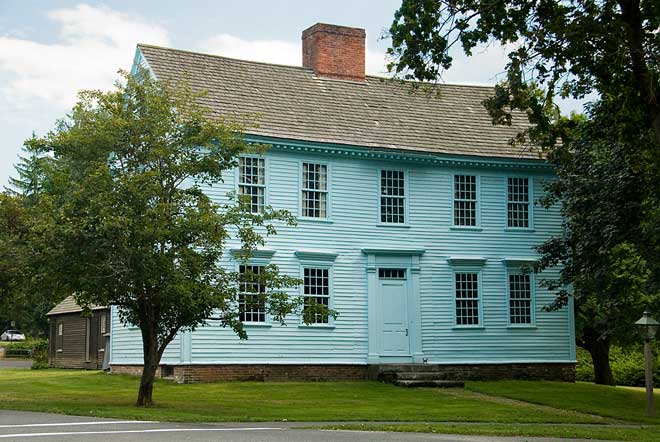
9:30 a.m. to 4:30 p.m. | Guided Tours on the hour.
Wednesday-Sunday and Holiday Mondays
Built in 1747, the Wells-Thorn House presents period rooms depicting the lifestyle of Deerfield residents in a progression from the early days of 1725 all the way up to the high-style of the 1850s. It is furnished to illustrate the development of the agricultural economy, domestic life, and refinement in the Connecticut River Valley.
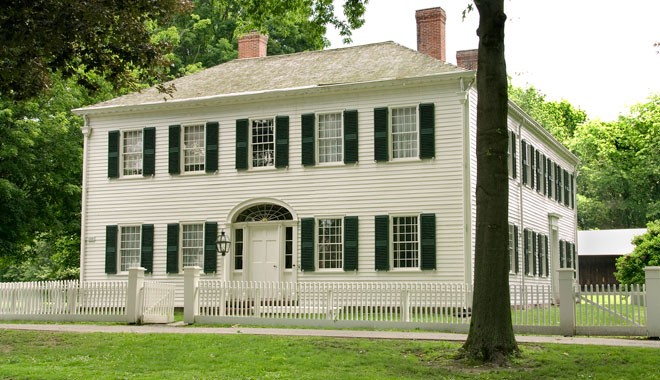
9:30 a.m. to 4:30 p.m. | Guided Tours on the hour.
Wednesday-Sunday and Holiday Mondays
Originally constructed in 1730, the Hinsdale and Anna Williams House was extensively renovated to its present appearance in 1816. Ebenezer Hinsdale Williams, a landowner and farmer, was born in Roxbury, Massachusetts, educated at Harvard College, and later moved to Deerfield, his mother’s native village. Williams, his wife Anna, and their two teenage children lived in a splendid Federal-style house until his death in 1838. French scenic wallpaper depicting Venetian scenes survives from the Williamses’ time, and other wallpapers have been reproduced from original evidence in the house. Furnishings listed in the probate inventory of Hinsdale Williams include a cooking stove, a washing machine, and 16 “flagg-bottomed” chairs.
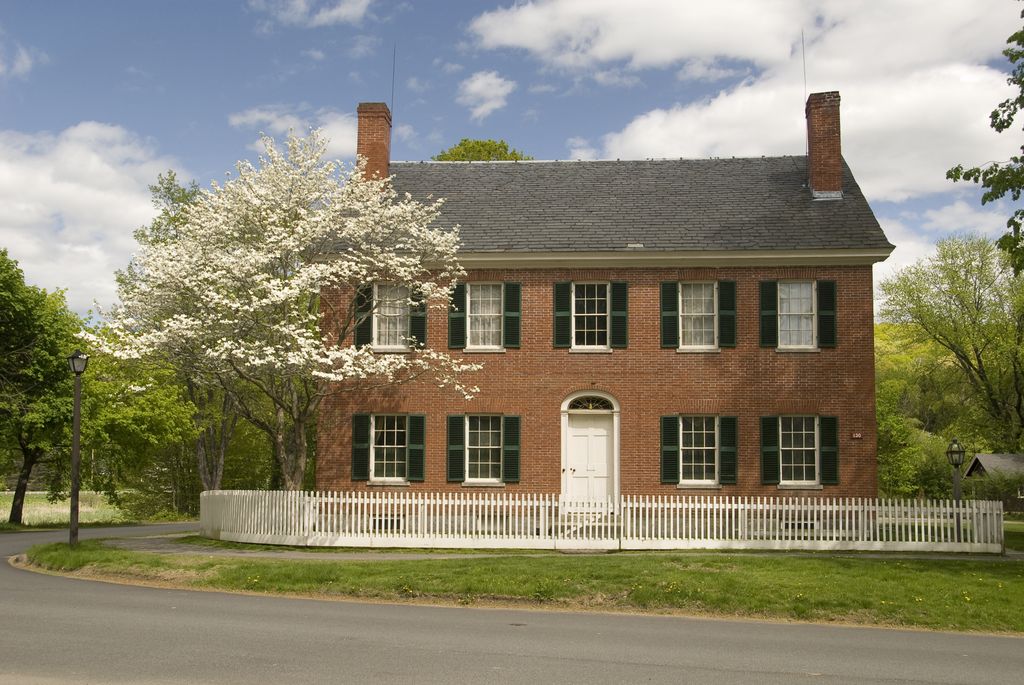
9:30 a.m. to 4:30 p.m. | Self-guided.
Wednesday-Sunday and Holiday Mondays
The Wright House was built of brick in a simple Federal style in 1824 by Asa Stebbins for his son Asa Jr. upon the occasion of the latter’s marriage. The house may have been designed by Winthrop Clapp, the builder of the Brick Meetinghouse (now the Brick Church) which was also erected in 1824. Asa Sr. had built his own house in brick in 1799, contrasting from the earlier Georgian-inspired clapboard houses in Deerfield.
Through the years the Wright House has been mainly a gallery house for showcasing Historic Deerfield’s outstanding collection of furniture. It is currently home to the exhibit Furniture Masterworks: Tradition and Innovation in Western Massachusetts, part of Four Centuries of Massachusetts Furniture.

History workshop offerings:
Come and Play
Six-legged Legends: The Hidden History of Insects.
For complete information please review our events calendar.
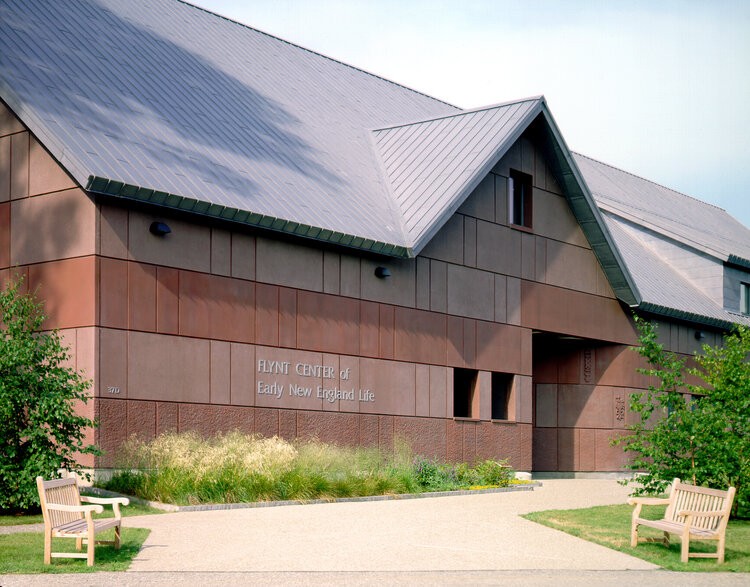
9:30 a.m. to 4:30 p.m. | Self-guided
Wednesday-Sunday and Holiday Mondays
Explore the exhibitions at The Flynt Center of Early New England, Historic Deerfield’s 27,000 square-foot, state-of-the-art facility containing climate-controlled exhibition galleries, visible storage area, and collection storage for the museum’s most sensitive and highly valued collections.
See Current Exhibitions at the Flynt Center of Early New England Life
Rotations and thematic displays every season are set against the backdrop of four main fibers that created most textiles before the 20th century; silk, wool, cotton, and linen. Together with the museum’s historic houses, the gallery displays a portion of the roughly 8,000 items in the fashion, needlework, and domestic textile collection.
• In the Flynt Center hallway, Following the Captives’ Trail is a photographic expedition by Allison Williams Bell combining images and maps with cultural and natural history details to give a sense of the daunting challenges met by the 1704 captors and captives of the Deerfield Raid.
• The Flynt Center also features the permanent exhibition Into the Woods: Crafting Early American Furniture, and the Museum’s Attic, the visible storage area of the museum’s collection of fine decorative arts, featuring our world famous collections of New England furniture and clocks, American powder horns, Samuel Pierce pewter tools, Chinese export porcelain, English pottery, and American ceramics.
Come visit the “Into the Woods” gallery at the Flynt Center of Early New England Life to view an impressive array of furniture produced in Boston in the 18th and 19th centuries. Rare and exceptional forms include an 18th-century japanned high chest, an 18th-century turret-top tea table, and a 19th-century sideboard attributed to cabinetmakers John and Thomas Seymour.
In 18th and 19th-century Britain and America, ceramics became an important medium for denouncing the horrors of slavery and promoting social change. Come visit the “Museum’s Attic” at the Flynt Center of Early New England Life to view and learn more about examples of anti-slavery ceramics, and the meaning behind their design and decoration.
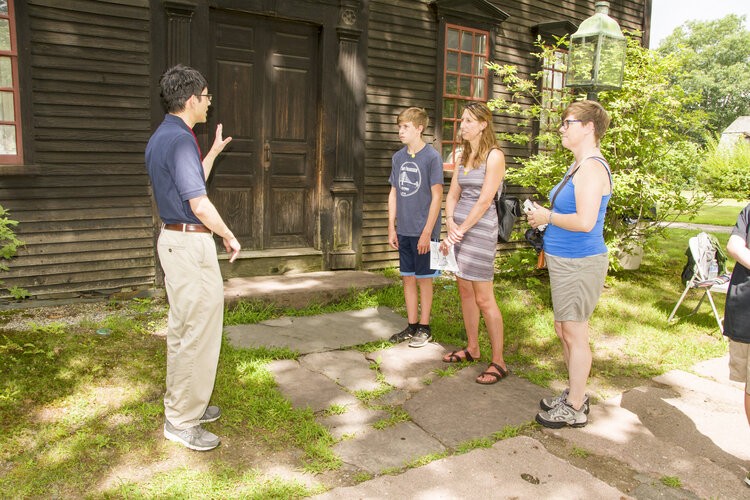
9:30 a.m. to 4:30 p.m.
Wednesday-Sunday and Holiday Mondays
Stroll the tree-lined streets of this 17th-century English village, the public commons and surrounding meadows, with a guided tour, self-guided tour map, or on your own.
• Guided Outdoor Walking Tours (45-60 minutes): Enjoy an outdoor walking tour of Deerfield. Tours include Deerfield Architecture Tours, Burying Ground Tours, and Deerfield History Tours. On the day of your visit, inquire at the Visitor Center to find out which tours are happening for the day. All tours are weather permitting. Inquire at ticket desk for specific tours and times for each day. (Included with admission.)
• Self-Guided Walking Tour Maps with routes and highlights for four topics: the Old Burying Ground; Pocumtuck Native Homeland; Deerfield English Settlement; and the 1704 Deerfield Raid. Printed maps available for $2 at the Museum Gift Shop & Bookstore.
• Main Street Stroll (Free): The mile-long Main Street and village commons are open to the public and available for all to enjoy (building access, maps and tours require paid admission).
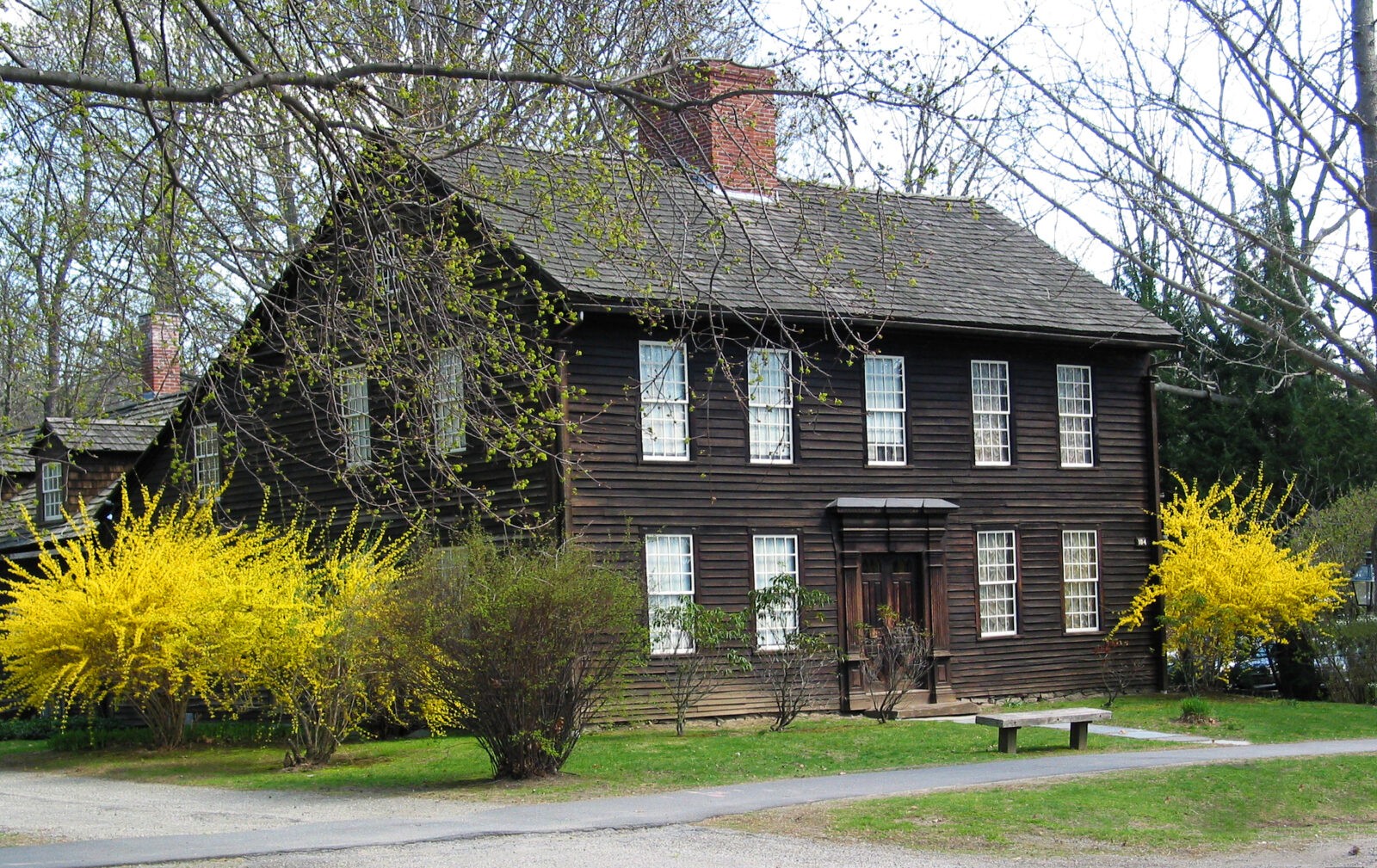
9:30 a.m. to 12:00 p.m. | Guided Tours on the hour.
Wednesdays, Thursdays, Fridays, Saturdays, and Sundays
Henry and Helen Flynt of Greenwich, Connecticut, purchased and restored numerous houses along Deerfield’s Street between 1942 and 1962. Built in 1734, and renovated in 1945, the Allen House served as their residence while they stayed in Deerfield. The evolution of the Flynts from their origins as Deerfield Academy parents to museum founders in 1952 is interpreted. The Flynts’ experience in Deerfield is also compared and contrasted to the efforts of other contemporary collectors such as the Rockefellers at Colonial Williamsburg, Henry Francis du Pont at Winterthur, and Henry Ford at Greenfield Village. The interiors of this house have been left as they were when the Flynts lived here including such personal belongings as clothing, newspapers, and curios. The house also served as a showplace for their outstanding collections of American antiques including New England furniture, English needlework, Chinese export porcelain, Dutch Delftware, and American pewter.
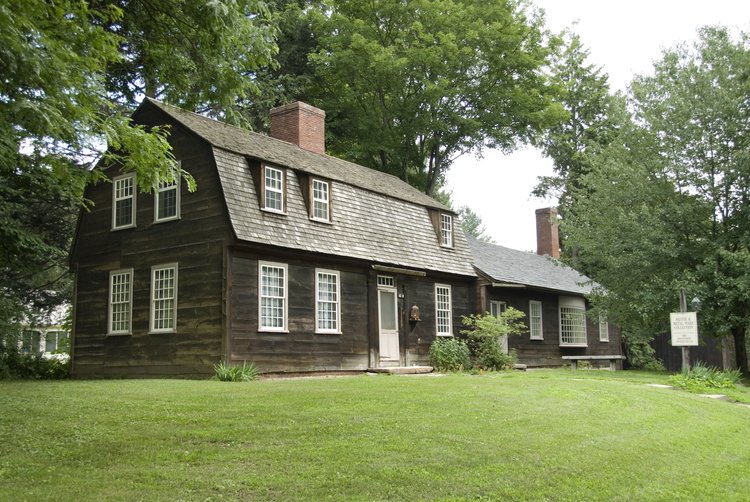
12:00 p.m. to 4:30 p.m. | Self-Guided.
Wednesdays, Thursdays, Fridays, Saturdays, and Sundays
The Henry Needham Flynt Silver and Metalware Collection is generally recognized as one of the top ten collections of American silver worldwide. The core collection of 92 pieces of American silver purchased in England by the Flynts in 1954 has grown to more than 4,000 pieces of American and English silver in a variety of forms from punch bowls to pepper pots. Of special interest is the communion silver of the First Church of Deerfield, the First Churches of Northampton, and the First Church of Sunderland, Massachusetts. The Deerfield church silver, featuring pieces by Jacob Hurd, Paul Revere, and Samuel Edwards, provides a window into the theological beliefs and liturgical practices of one Puritan town over its first century and a half of existence. The building also features a silversmith’s workshop with many traditional tools, and a room devoted to pewter and other metalwares made and used in early America.